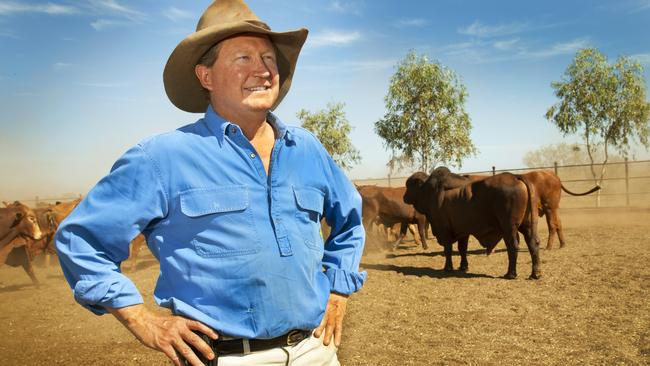
If there was any doubt that the iron ore major was 100 per cent committed to its plan to green the world (and make pots of money along the way), it was laid to rest on Tuesday.
While the ASX announcement was a relatively brief two pages, Fortescue’s announcement it wants net zero scope 3 emissions by 2040 is a quantum step beyond the ambitions of any of its peers and competitors.
It also depends on some eye watering underlying assumptions – not only that Fortescue can meet its own ambitions of overcoming the substantial technical challenges of turning hydrogen into a major trading commodity, but that the pace of change in the steel industry reaches a tipping point 20 years ahead of the expectations of the rest of the world.
Throughout its history, Fortescue has prided itself on setting so-called “stretch” targets – asking for the seemingly impossible in the hope of achieving the extraordinary.
Even though its staff have often fallen short of those goals – the most recent example being the cost and timing blowouts at Iron Bridge – there’s no doubt that much of the company’s enormous success is based on the strategy.
It’s never been easy making money by betting against Fortescue and its founder, Andrew Forrest.
Back in 2012 renowned short-seller Jim Chanos had a red hot crack, only to find Forrest was prepared to back his own horse with cash, greeting every doom-laden criticism by the hedge fund manager with a multimillion share buying spree – worth about $135m in only a few months after Chanos tipped Fortescue as a prime target in April 2012.
Fortescue nearly did go bust that year, but is now one of the great success stories of Australia’s mining industry.
But this time Fortescue is setting a stretch target for not just its own staff.
Its scope 3 pronouncement assumes one of the world’s biggest essential industries will completely retool the way it does business, and potentially junk hundreds of billions in sunk capital, decades ahead of expectations.
On the one hand, there is an irresistible logic to Fortescue’s thinking. Wholesale and (initially) expensive industrial shifts are exactly what is required for the world to escape the worst impacts of global climate change.
One the other sits the decades of recent history suggesting that sunk capital usually wins the political arguments surrounding climate change.
Right now about 70 per cent of global steel production starts with blast furnaces, which inject metallurgical coal with iron ore to make metallic iron, then converted to steel in secondary furnaces.
BHP tips the cost of a 4 million tonne a year blast furnace operation at about $US4bn ($5.5bn).
There are alternatives to produce metallic iron which involve hydrogen injection into blast furnaces, under trials in Europe, China and elsewhere, and a novel process which Fortescue itself is trying to develop.
But Fortescue’s iron ore rivals believe that the technology, even if it can be commercialised, is unlikely to be ready for widespread use until the early 2030s, and BHP believes traditional blast furnaces (using coal) will still make up about half of global steel production by 2050.
That is largely based on the argument that the world’s biggest steelmakers like China, and emerging forces such as India, have relatively young blast furnace fleets and will be loathe to sink substantial new capital to scrap or retool them within their 50 year initial working life.
Australia’s BlueScope Steel seemingly agrees, flagging it will spend $700m relining an old blast furnace at its Port Kembla works rather than punting whether new technology will be ready for deployment when the current furnace needs replacing in 2026.
Fortescue sells the overwhelming majority of its iron ore to China. Its new target for its scope 3 emissions effectively suggests its customers will be carbon neutral by 2040.
That is 20 years ahead of the carbon neutral goal set by China, the world’s biggest steelmaker.
It is at least ten years ahead of the goals set by most of the other major global steel producing nations.
The broader consensus suggests that Fortescue’s scope 3 targets are set for failure – albeit decades away, somewhat reducing the potential embarrassment – and that its latest “stretch target” is little more than a marketing exercise for a renewable energy spending program already being questioned by analysts and investors.
If that consensus is correct Fortescue will have to either abandon its scope 3 targets or only sell to the few steel mills that can reach its lofty ideals.
The alternative though, is that Fortescue is right and that its stretch targets and technological prowess can help provide the leverage that transforms the steel industry.
If so, the payout is potentially enormous – as it was when Forrest backed himself to challenge Rio and BHP and establish a “new force in iron ore”.
If steel sector does retool far faster than expectations, and if Fortescue can establish itself as the first leading commercial producer of hydrogen, and if it does pioneer a cheap and zero-carbon means of reducing iron ore to iron, and if the world does suddenly wake up to the need to actually do something about climate change, whatever the cost.
If all of that works, then Forrest won’t just have transformed the Australian iron ore sector, he will have helped transform an industry that has underpinned human development for about 2600 years.
Mind you, even if Fortescue again manages the seeming impossible, the pay-off is more than a decade away.
And who thinks that far ahead these days?


What happens when irresistible optimism meets an immobile industry? Fortescue Metals Group may be about to find out.